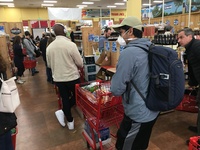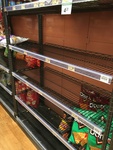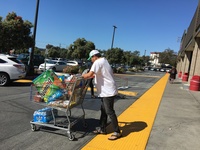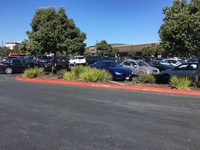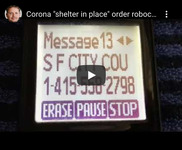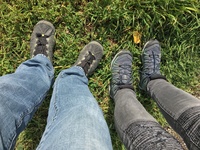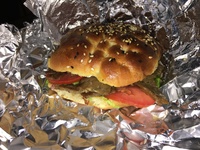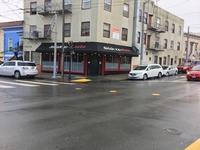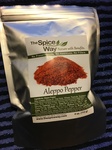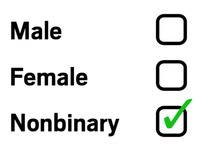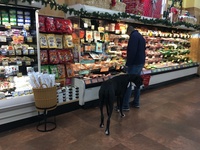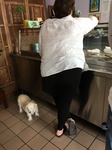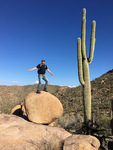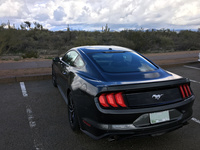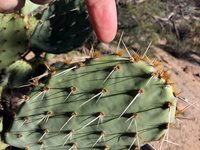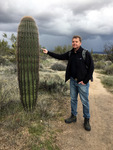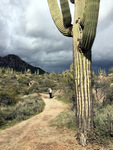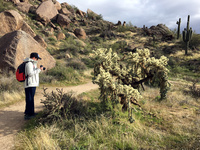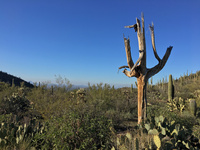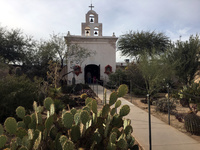 |
| Angelika/Mike Schilli |
|
|
Angelika Even though the esteemed Mr. Trump claimed last week that the virus was a foreign one and could be stopped by imposing a travel ban on EU countries, no one can deny that the virus is also spreading in the USA. However, since there are still not enough tests, no one knows exactly how many people are already walking around with the virus. The number of unreported cases is probably extremely high, leading experts to suspect that the situation here will be similar to Italy in the coming weeks. Now, there is finally an attempt to decisively slow down the number of infections. This is a Herculean task in a country that is not only vast but has always valued individual freedom and minimal government intervention. Not to mention the unbalanced and outrageously expensive healthcare system.
How does our life look now, specifically? Michael has been working from home for almost two weeks. Not only did Apple send their employees to work from home, but all the other big companies like Facebook, Microsoft, Google, etc. did the same. This is relatively unproblematic for most employees in these companies. Michael already works from home every Wednesday and Friday. He says those are the days when he gets a lot done and is most productive, and of course, he can lounge around in sweatpants all day and go surfing during his lunch break. "Home office" is therefore not a foreign concept to Michael.
Until Friday of last week, I was still driving to school every day. However, because large tech companies were already allowing their employees to work from home, I at least got to enjoy dreamlike traffic conditions during the heaviest rush hour. Normally, it takes me up to 50 minutes to get to work by car for a little over 30 kilometers, because at times the freeway resembles a parking lot more than a highway. But last week, it was smooth sailing every day, and I made it to my school in under 30 minutes.
However, our school is now closed for at least 3 weeks because, as is well known, children are germ spreaders. Since children apparently show hardly any symptoms with the virus, we have essentially been playing Russian roulette for weeks. Our students who were coughing wildly were sent home, but since there are not enough test kits in the USA, children are very rarely tested for Corona unless they show severe symptoms. To make matters worse, children tend to cough, sneeze, and sniffle constantly during the colder season, but it is usually just simple colds. The only thing we could do was to ensure that our kids washed their hands thoroughly.
Desks and doorknobs were also constantly disinfected, and the children were encouraged to cough into their arm pits. However, anyone who has worked with or raised children knows that this is easier said than done. I can't even count how many times a child has coughed, sneezed, or spat heartily on their desk right in front of me. And I work with children who are not always easy to handle, who sometimes forget to wash their hands despite multiple reminders, or prefer to play with the water without incorporating the soap into their play. Nevertheless, we tried all sorts of tricks: cool videos about the coronavirus and hygiene, comics, rewards, songs (for example, singing "Happy Birthday" twice while washing hands).
Of course, it is not an easy decision to close schools, because where are children supposed to go when their parents have to work, not to mention missing lessons. Going to school also means structure and continuity, which is of enormous importance, especially for the children I work with. Therefore, our school has decided to teach the children online ("remote learning"). Most of our families are well-equipped technically, and for others, we sent the children home with the school's own Chromebooks (Google laptops). We already work a lot with new technologies in our school. Naturally, we also provided school notebooks and books. My colleague, who is the trained elementary school teacher in the class, will start sending our students learning material every day next week, which they have to work on daily.
Among other programs, we use the non-commercial website of Khan Academy. The site offers free lesson units with YouTube videos and exercises that are based on curricula. The teacher can assign specific lesson units to each student for completion and can see not only how long the student takes but also how successful they were. Salman Khan founded the portal in 2009, which is funded by donations. For example, Google donated 2 million dollars in 2010. The idea for Khan Academy came about because Khan used the internet with the help of "Yahoo Doodle Images" to tutor his cousin in math. Other cousins also found the explanations great, and Khan started posting his videos on YouTube. We are curious to see how our children will receive the whole thing and whether the little rascals are really ready to learn independently. We are all a bit skeptical about this, as even regularly completing homework usually doesn't work out so well.
Since I work as a behavioral therapist in the classroom and am primarily responsible for helping children with their social behavior, it is more difficult for me to influence this when the children are not physically present at school. Currently, the plan is for us to write reports and take on other administrative tasks, and of course, to prepare our "Social Emotional Learning" lessons, which we behavioral therapists teach in our classes every day. It is still unclear what will happen if we have to remain closed for a longer period. Our Governor, Gavin Newsom, mentioned today that it is quite possible that schools in California might not reopen until the summer holidays. Unbelievable!
By the way, although the governor can order the closure of all public schools in California in an emergency, he usually prefers to hold back and leave the decision to the individual school districts. There are a whopping 977 school districts in California. Currently, 922 of them have closed their schools due to the virus, although the duration of closures varies. Delegating decision-making authority to the local level does not make the situation any easier in times of crisis. This is often even more complex than in Germany, where the responsibility for schools lies with the individual federal states.
Panic buying of necessities like toilet paper and all kinds of disinfectants has, of course, also happened here. The supermarkets are full of people and some shelves are empty. You know: pasta and tomato sauce, rice, flour, canned goods. Funnily enough, the snack items were also quite thinned out here, as well as all frozen ready meals like frozen pizza. At Costco (comparable to Metro in Germany), the rush is enormous and on some days it's hardly manageable. The sister of an employee at my school works at Costco and reported that last Friday morning, 2000 people had already shown up at her Costco, an absolutely insane number, even for this mega market. She also mentioned that the police had been called several times because customers were fighting over products or yelling at the checkout because the sale of some products was limited. We have experienced the supermarkets being full, but have not yet seen any riot-like scenes. However, we avoid stores where there is already a line forming outside the door. We always have supplies at home despite having little storage space in the apartment, so we are prepared for earthquakes. Michael is our shopper and he always meticulously ensures that nothing runs out and that there is always enough of everything. I have often complained about this because sometimes I don't even know where to put all the stuff. But now I am glad about it.
Angelika Since today (March 17), we are in a state of emergency in San Francisco and the Bay Area, and we have been asked to stay in our apartments and houses and only go out if it is absolutely necessary. The government aims to slow the spread of the coronavirus with this measure. This currently affects almost seven million people in the Bay Area. Our mayor in San Francisco, London Breed, announced a measure called "Shelter in Place" yesterday. In the evening, we then received an automated message by phone, spoken by our governor Gavin Newsom, stating that the order is effective starting midnight.
It is not yet a curfew, as we do not need permission to leave the house, but it is considered a misdemeanor if a citizen is out on the street without a valid reason. Most shops and businesses are closed, and only stores that provide absolutely necessary services or goods are open. These include grocery stores and farmers' markets, medical practices and hospitals, pharmacies and drugstores, banks and the post office, laundromats, gas stations, and auto repair shops. Interestingly, home improvement stores like Home Depot are also open. Important government offices like the DMV have not yet closed their service desks but strongly advise only showing up in person if absolutely necessary and to handle matters online or by mail whenever possible.
Our subway, the BART, as well as buses, streetcars, and taxis, and services like Lyft and Uber, can be used to take care of necessary tasks, such as visiting a doctor's office. However, routine doctor appointments should be canceled. Restaurants are only open to sell food for takeout or to send it home via delivery service. Sitting down and dining is no longer possible anywhere. Many restaurants in our neighborhood had already been forced to close their doors because few people were interested in dining out. Businesses like hair salons, nail and fitness studios, clothing stores, department stores, or gift shops are all closed until at least April 7th. We already know that this will drive many small businesses and restaurants in San Francisco into bankruptcy, as many had already given up before COVID-19 due to the high rents and costs in the city.
You are allowed to go out if you cannot work from home and need to go to work. Trips to the supermarket and the pharmacy are also permitted. Jogging, cycling, and walking to get some exercise and fresh air are allowed as well. Authorities even encourage this, as long as you go alone or with the people you already live with. Otherwise, you must maintain a distance of at least 6 feet (1.8 meters) from other walkers. However, we wonder how long this will last, because when we went for a walk today, everyone and their dog was out. Social distancing is not so easy in densely populated areas.
In these times, our hiking boots are serving us faithfully, as they symbolize a piece of freedom and peace. They reliably carry our feet through the landscape. Since it is still allowed to go outside for fresh air, we have been putting on our hiking boots every day and heading out into nature. Often, we go to the ocean, where we let the salty air blow around our ears, and we have also walked around Lake Merced in San Francisco. Yesterday, the Pacific Ocean was so peaceful, and the sun made the water sparkle so beautifully, as if nature was trying to tell us that everything will be alright again.
Michael Turkish fast food in America cannot be compared to Turkish fast food in Germany. Here in California, there is even a considerable number of establishments that prepare and sell Turkish food, but somehow it tastes completely different. Most of the time, it is not purely Turkish specialties, but more Mediterranean or Middle Eastern influenced dishes. So it is not unusual for a Turkish restaurant here to sell Greek "Gyros" or Middle Eastern "Falafel" without batting an eye. Unthinkable in Germany, political unrest would ensue!
Recently, when a Turkish fast food place opened around the corner from us, I naturally went there as one of the first customers and asked for a döner, which they didn't have in that form. I learned from the seller, who originally came from Turkey, that Americans generally have trouble keeping the meat held together by the bread from falling out while eating, and that's why every fast food place sells so-called "wraps," in which the meat cut from the kebab skewer is wrapped with salad in a thin flatbread pancake. Of course, it tastes completely different from the toasted coriander bread sold by German-Turkish fast food places!
Furthermore, one must know that the Döner is a purely German specialty that was brought into the country by Turkish immigrants. What is called "Döner" in Germany, in this form —- with the toasted coriander roll and the crispy veal roasted on a spit (recently also turkey in Munich) and seasoned salad -— is very, very rarely found outside of Germany. This is also the reason why, whenever I happen to be in Munich every few years, I immediately seek out the nearest Döner stand and greedily devour a Döner.
Recently, another Turkish restaurant opened up within walking distance. It's called "Shish Ke Baba" and is located at the corner of 30th Street and San Jose Avenue in the Bernal Heights neighborhood. I explained the situation to the friendly lady at the counter, and her husband in the kitchen immediately agreed to make me a "German Style" döner using a flatbread, which is their specialty. It wasn't quite the coriander bread I'm used to in German-Turkish fast food places, but more like a French brioche, but still. They also advised me to carefully unwrap the whole thing from the aluminum foil and take a bite, otherwise the contents would fall out of the bun. But I just laughed and said I had practice with that. The fun wasn't exactly cheap, as the dish only comes with an extra salad, but I paid about 15 dollars and was very satisfied with the döner.
What was still missing was the typical döner spice. When the man in German döner shops asks, "Do you want it spicy?" and you say yes, he sprinkles in a certain substance, which, as I found out through Amazon, is the Turkish spice "Aleppo pepper." I quickly ordered it online for a small amount of money, and next time I order my döner "German style," I will secretly spice it up at home. Maybe one day we'll get a real döner in our döner diaspora!
Michael When filling out a form, one typically checks either "male" or "female" under "gender." However, gender roles have recently been more fluidly defined, and anyone can be anything or neither. Trendy companies and left-leaning authorities have been offering a third box called "non-binary" for a while now, for those who do not want to identify as either male or female. The term is familiar to computer experts, as "binary" refers to a value that has two possible states and assumes either one or the other.
Now, it's not that simple when someone is neither male nor female, because how do you address a non-binary person, as "he" or "she"? For example, if a colleague wants to point out that a non-binary person works well, do they refer to "her performance" or "his performance"? Do you go to "his" office or "her" office for a meeting? Nowadays, it is not uncommon for employees to be able to specify their "personal pronouns" in the company directory. A man would write "he, him, his," and a woman would write "she, her, hers." The first pronoun is used if the person is the subject of a sentence ("He finished the project"), the second if the person is the object ("Management speaks greatly of him"), and the third if the sentence needs a possessive pronoun ("The backpack I found was his").
If a non-binary person has completed a project, you can't say "he" or "she," and "it" would also sound strange. A commonly chosen combination is "they, them, theirs," so you would say "they finished the project," which actually suggests that it involves multiple people, but the speaker has to clarify that somehow with additional information. It's not so easy if you want to please everyone.
As always with new regulations, unexpected side effects can arise. For example, I know a gentleman who likes to participate in public long-distance runs and always finishes among the top ranks. Just for fun, during registration, he once checked "non-binary" instead of "male" or "female." On the day of the race, he performed exceptionally well, finishing among the first, and was surprised afterward to find that his name was not on the results sheet at all: the sheet listed men and women separately with their finish times, and the computer system simply did not recognize a "Non-Binary" category.
Another piece of evidence for the gender confusion I recently found in a newspaper report about a school in Harford, Connecticut, where female student-athletes were outraged that in their disciplines now also allows Transgender men to compete who dominated the events. The women complained that due to the physical superiority of the ex-men, the outcome was predetermined and the women's competition was becoming a farce.
Conservative-minded citizens naturally recognize the problem now as doubly ironic, because the contradiction between gender separation in competition on the one hand and the softening of gender roles on the other hand constitutes an irresolvable contradiction. Well, the left-liberals who pushed the system through might still find a solution; the whole thing is obviously not fully developed yet. Tip from the expert: It usually pays off to plan carefully and consider side effects before robotically always siding with the one who shouts the loudest.
Michael California regulates in Chapter 8 of the "Health and Safety Code that no dogs are allowed inside establishments that sell food, such as restaurants or grocery stores. However, Californians are absolutely infatuated with their dogs and don't take laws very seriously. Lately, I've been noticing more and more that dog owners are simply ignoring the health department's regulations, and the present store staff don't have the courage to reprimand the violators. Apparently, there are no consequences for the stores either, otherwise, they would be as strict as they are with the serving of alcohol or the sale of cigarettes, where they go to absurd lengths to comply with all the regulations that prevent minors from buying beer or tobacco products. Especially in grocery stores with a hipster-boy and yoga-girl clientele, you often encounter people with huge dogs, at least in California. I've even seen dogs who unabashedly licked the sausages displayed in the refrigerated section! The fines from the regulatory office seem to be laughable, otherwise, the management would give the employees, who naturally couldn't care less, a proper dressing-down.
An exception exists in restaurants with outdoor seating: In these outdoor areas, dogs are allowed to sit under the table with their owners. However, we have also seen dog lovers offering their plates to their dogs for licking. Bon appétit, dear guests!
Dog owners could, of course, declare their Fido as a service dog for the disabled, but that is not as easy as convincing airlines that the dog is an "Emotional Support Animal" without which the traveler would immediately suffer a nervous breakdown. Genuine service dogs wear special harnesses, and the owner carries the corresponding paperwork. However, I predict that the dog ban will eventually be forgotten because no one enforces it, just like camping on sidewalks in San Francisco and breaking car windows to secure the livelihood of the homeless are now considered normal, and the perpetrators go unpunished.
Michael During the year-end holidays, Angelika booked a short vacation for us in the desert city of Scottsdale, Arizona. Upon arriving at the airport in Phoenix, we initially stood somewhat perplexed at the car rental area, as the usual wide selection of Japanese and American vehicles was not available. Instead, there were only uniform cars: five Ford Mustang convertibles and one regular Ford Mustang. Since convertibles are the ultimate tourist traps that criminals also like to slash open, we reluctantly opted for the 2020 Mustang with a regular roof. The little car turned out to be relatively decent, accelerating quickly with good cornering, and despite its 310 horsepower, it consumed only about 8 liters of regular gasoline per 100 km. I'm not a fan of American cars, but this one drove quite well.
Scottsdale itself consists of a touristy "Old Town" with clothing, cosmetics, and dreadfully kitschy gallery shops. You could easily skip that. The rest of the city is large but sparsely populated, with long street blocks. Scottsdale offers relatively monotonous shopping malls and endless settlements with bungalows, similar to Phoenix. However, the selection of innovative restaurants is surprisingly good, though they demand steep prices, almost on par with San Francisco.
For hiking, we went to the "Granite Mountain Trail" in the "McDowell Sonoran Conservancy," located 40 miles north, and to the "Saguaro National Park," which is an hour and a half away, and neither Angelika nor I had ever heard of it. The Arizona desert is home to these giant cacti, and you can marvel at them on both sides of the highway on the way from the airport in Phoenix to Scottsdale.
We hiked every day without overexerting ourselves, usually around five to eight miles, with perhaps a maximum elevation difference of 100 feet, and the view from the rocky desert hills we climbed was magnificent. Along the way, the hiker passes by gigantic cacti, some of which reach up to eight meters in height. We experienced all kinds of weather, from bright sunshine to light drizzling rain, and even a few snowflakes, all on the same trail, with mild temperatures just above freezing. In the summer, it gets so hot there, with temperatures over 100 degrees Fahrenheit, that you can't hike the unshaded trails in the midday heat.
The roads in Saguaro National Park are mostly unpaved, and at the trailheads, there is usually only space for a few cars. Sometimes, people park haphazardly on the sandy track or drive a few miles on dusty roads until they can leave their car at the next turnout. There weren't many people there, but there were hardly any parking spots left. Anyone who goes there in the warmer season instead of the depths of winter can probably expect traffic mayhem. As is well known, Americans like to drive in circles or in the second row just to park right in front of the spot eventually. Walking from the car to the starting point of an activity is frowned upon, even if it's a gym or a hiking trail.
The cacti, some of which were probably 25 feet high, right along the hiking trails were truly a sight to behold. They even grow on steep slopes with partially very rocky soil and seemingly survive without water. They thrive and you can see hundreds of magnificent specimens. There were also all sorts of animals around; we saw a stray coyote and the ubiquitous gophers. There are supposedly plenty of rattlesnakes as well, but thankfully, we didn't hear any rattling on our paths.
Since we were already in the area, we also drove to the Mission San Xavier del Bac near Tucson, which was founded by the Spaniards in 1692, demolished by Apache Indians in 1770, and rebuilt in 1783. The buildings are still well-preserved today, and the gift shop is not only advertised as "affordable" but also sells reasonably priced pilgrim goods. From a small side chapel (Figure 25), inside of which it was really hot due to hundreds of lit candles, we learned that the building with the two bell towers was supposedly featured in an episode of the TV series Breaking Bad, as a pilgrimage site for the two Mexican gangsters with cowboy boots who crawled through the dust to the chapel in an extreme manner of pilgrimage.
Greetings from the rural USA!
Angelika and Michael


